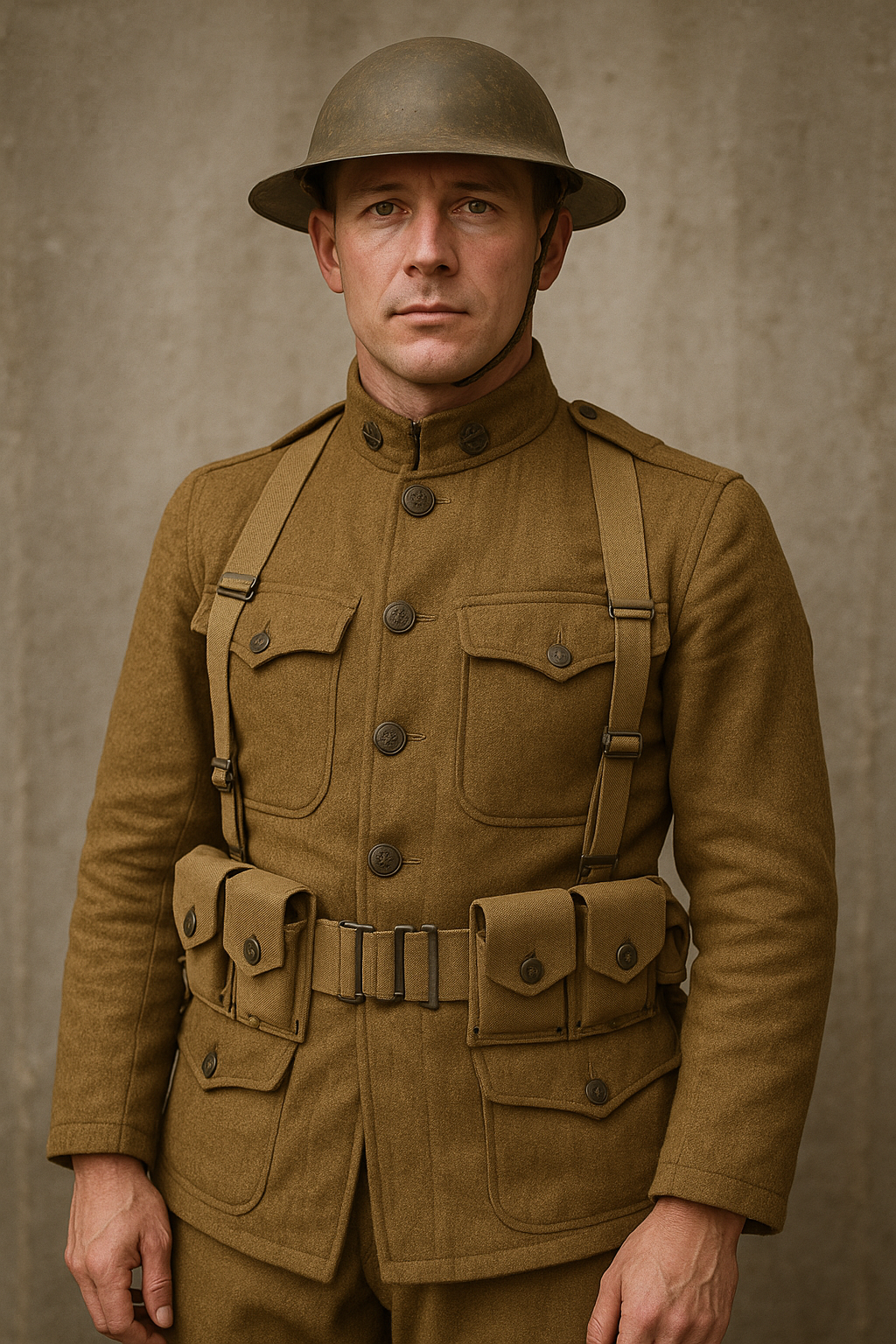
WW1 United States Uniforms: A Collector’s Guide to History, Trends & Pitfalls
Published on Aug 17, 2025
WW1 United States Uniforms: A Collector’s Guide to History, Trends & Pitfalls
Introduction: Did You Know This About WW1 Uniforms?
Did you know that over 4 million US soldiers served in World War I, each equipped with uniforms that defined a new era in military history? The WW1 United States uniforms not only symbolized military function but also told stories of design evolution, wartime economy, and international influence.
Whether you're a collector, reenactor, or history enthusiast, understanding these iconic uniforms can elevate your passion. But beware: not all replicas are accurate, and pitfalls abound in the marketplace.
Let’s dive into the history, features, and best practices surrounding United States Army uniforms WW1 – plus how they compare to British gear and modern reenactment trends.
The Evolution of WW1 United States Uniforms
From Blue to Olive Drab
Before WW1, the US military mainly wore dark blue uniforms, a tradition dating back to the Revolutionary War. But by 1917, practicality and camouflage needs led to the introduction of olive drab woolen service uniforms, similar to what the British Army had already adopted.
Key Uniform Elements in WW1:
- Tunic (Service Coat): 4-pocket design with high stand collar
- Breeches: Tight-fitting below the knee
- Puttees or Leggings: Wool wraps or canvas gaiters
- Campaign Hat or Overseas Cap
- Greatcoat (Overcoat): Worn in cold climates
- M1917 Helmet (aka “Doughboy Helmet”)
Why WW1 United States Uniforms Still Matter Today
For collectors and historians, these uniforms offer more than just aesthetics:
- They reflect US industrial growth during wartime.
- They show influence from European armies, especially a WW1 British soldier’s uniform.
- They help recreate authentic WW1 reenactments, down to stitching and buttons.
Actionable Tip:
✅ When collecting or reenacting, always match the insignia and patches to the correct Division and period.
What Makes an Authentic United States WW1 Uniform?
1. Material Quality
- Authentic uniforms were made from wool serge, which is heavier and rougher than modern wool blends.
- Replica warning: Many online stores use polyester blends—avoid them if authenticity is key.
2. Stitching and Buttons
- Original tunics had double-needle stitching and brass buttons bearing the US eagle insignia.
- Counterfeit alert: Plastic buttons are a dead giveaway of replicas.
3. Manufacturer Stamps and Labels
Look inside the tunic or overcoat:
- Original pieces may show contract numbers, dates, and manufacturer stamps.
✅ Actionable Tip: Use a UV light to inspect stitching. Modern threads fluoresce under UV, while old cotton threads typically do not.
Pitfalls to Avoid When Buying WW1 US Uniforms
1. Buying Unauthenticated Replicas
Many eBay listings or flea markets promote uniforms as "original" when they’re not. Always:
- Ask for provenance or documentation.
- Request high-resolution photos of labels and wear patterns.
2. Mixing WW1 and WW2 Gear
This is surprisingly common. Know the difference:
- WW1 tunics have stand collars; WW2 uses fold-over lapel collars.
- WW2 US uniforms are a darker olive drab (OD#7) compared to lighter WW1 olive drab (OD#33).
💡 Trivia Answer: What color are World War II American uniforms?
They were generally olive drab shade #7, which is darker than WW1's OD#33.
WW1 United States Uniforms vs WW1 British Soldiers’ Uniforms
FeatureU.S. WW1 UniformBritish WW1 Uniform
Helmet M1917 “Doughboy” Brodie Helmet
Color Olive Drab #33 Khaki
Collar Stand Collar Open with Shirt & Tie
Weapon Carriers Cartridge Belt Bandolier
Tunic Design 4 Pockets 2 Pockets
👉 Collectors often confuse these due to their similar silhouette. Always verify the button design and insignia.
Current Trends in WW1 Uniform Collecting and Reenactments
1. Growing Popularity of Reenactment Groups
- WW1 reenactment clubs are growing in the US and Europe.
- Events now demand hyper-authentic uniforms, down to stitching and fabric.
2. Rising Value of Original Pieces
- A complete, verified WW1 US uniform set can fetch $800–$1,500 or more, depending on condition and division patches.
- Items from famous divisions like the 42nd "Rainbow" Division carry premium value.
3. Tech Meets History
- Some collectors use AR (augmented reality) to display and interact with uniforms digitally.
- 3D scanning helps museums preserve original artifacts for study.
How to Start Your WW1 United States Uniform Collection
- Research Specific Units or Divisions
- Example: 1st Infantry Division ("Big Red One"), 91st Division ("Wild West Division")
- Start Small
- Begin with caps, puttees, or insignia patches before buying full tunics.
- Use Trusted Dealers
- Visit military trade shows or work with verified antique militaria dealers.
- Document Your Pieces
- Maintain a digital or physical log of purchase receipts, photos, and historical background.
- Join Collector Communities
- Forums like the US Militaria Forum offer expert insights and ID help.
Where to Find WW1 United States Uniforms Today
Top Sources:
- Military Collectible Shows
- Online auction platforms (eBay, but be cautious!)
- Historical reenactment gear retailers (e.g., What Price Glory, Soldier of Fortune)
- Estate sales and military surplus stores
- Museums with deaccessioned collections
👉 Action Tip: Always verify the seller’s credentials and ask for provenance before making high-value purchases.
Conclusion: Your Journey into WW1 United States Uniforms Starts Here
Whether you're collecting, reenacting, or just admiring the craftsmanship of a United States WW1 uniform, there's a rich story stitched into every seam. These uniforms offer insight into one of the most pivotal moments in global history — and preserving them keeps that history alive.
Remember:
- Prioritize authenticity.
- Avoid common replica traps.
- Follow modern trends to stay updated.
So, ready to build your own WW1 collection or participate in your first reenactment? There’s no better time to honor the past than now.
🎖️ Call to Action:
Join a collector group, visit a military show, or start researching your first piece today. The legacy of WW1 United States uniforms awaits you.
